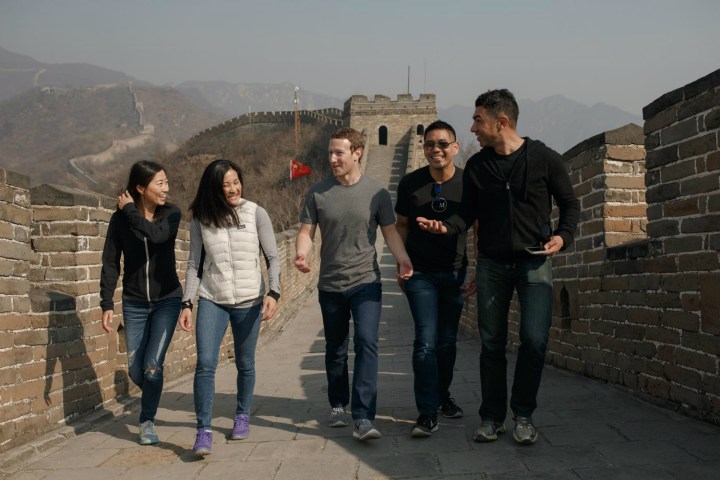
The News Feed censorship tool was created specifically to help the platform make inroads into China, claim employees at the company who spoke to The New York Times.
Facebook CEO Mark Zuckerberg has made clear his ambition to drastically increase Facebook’s user base. Speaking in February, the company’s founder predicted the platform would have 5 billion members by 2030.“We want to finish connecting everyone, we’re going to do it in partnership with governments and different companies all over the world,” remarked Zuckerberg at the time. In its most recent quarter, Facebook claimed its user base increased by 17 percent year-over-year to reach 1.75 billion.
However, the restriction on the social network in China (in place since 2009) has cut it off from a massive potential audience of over 1 billion people. That void has been filled by local platforms and Western services that are willing to play ball with the Chinese government in terms of censorship, such as Weibo, and LinkedIn. On the other hand, web giants such as Google and Twitter are in the same boat as Facebook, due to their refusal to block content in the country.
Facebook reportedly doesn’t plan to utilize the new tool itself. Instead, it will offer it to a third party (such as a Chinese contractor) to monitor and remove trending stories on the platform. The software’s code is visible to engineers within the company, and is already causing disagreements — mainly due to Facebook’s fraught history concerning censorship.
This year alone, Facebook has faced multiple criticisms over its censorship of historically relevant news and images, and over the alleged suppression of conservative news on its trending feed by ex-staffers. The company is also currently at odds with the media over the so-called rise of fake political news on its platform.
A number of employees who were working on the new software have reportedly left Facebook after voicing concerns regarding its implementation. The company has not confirmed whether the experimental feature will, in fact, see the light of day.
“We have long said that we are interested in China, and are spending time understanding and learning more about the country,” a Facebook spokesperson said in a statement.
This approach is best reflected by the company’s CEO, who has made multiple trips to China (most recently in March), showing off his Mandarin skills along the away. In June, Facebook COO Sheryl Sandberg made a similar statement to the firm’s board of investors. China also uses Facebook’s ad network to show promotional content to users outside of its borders.
It should be noted that Facebook already restricts content on a global scale on the behest of national governments, as detailed in its data requests report. Facebook claims these requests are linked to material that violates the law in a specific country. It says the following in regard to these types of removals: “When we receive such a request, it is scrutinized to determine if the specified content does indeed violate local laws. If we determine that it does, then we make it unavailable in the relevant country or territory.”
Until now, it seemed Facebook’s decadelong connectivity strategy would be its main route toward achieving its globe-conquering ambition. Using solar-powered drones, satellites, and local Wi-Fi and mobile internet projects, the company intends to bring connectivity to rural areas in emerging nations. Those plans have taken a hit of late, courtesy of hardware mishaps and accidents. In September, Facebook lost its Amos-6 satellite due to an explosion that destroyed the SpaceX rocket that was carrying it. And, just this week, the U.S. aviation safety agency the NTSB revealed it is investigating an incident involving a “structural failure” suffered by Facebook’s internet-serving Aquila drone during its inaugural test flight.


